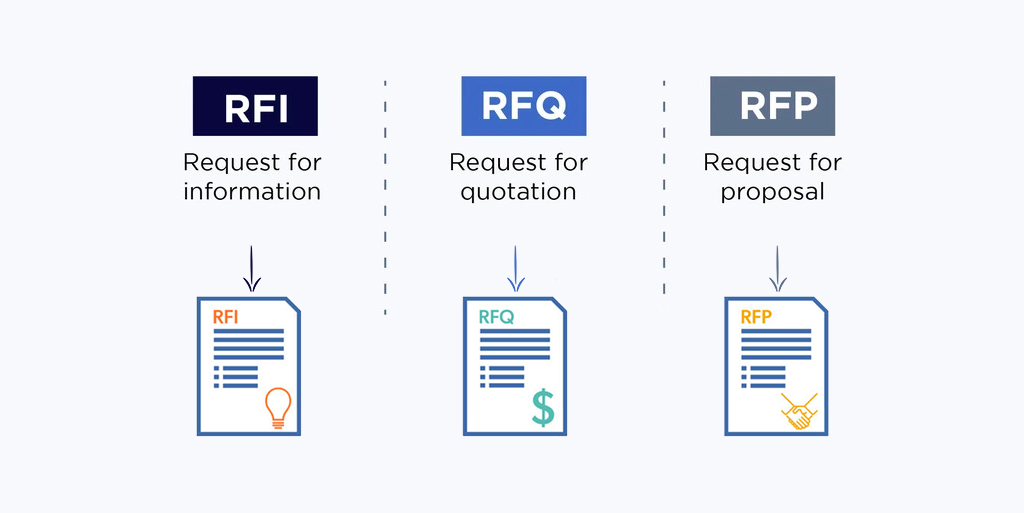By centralizing supplier communications, data management, and analysis, our software enhances transparency and compliance, enabling your business to make strategic purchasing decisions.
 Audit trails
Audit trails
 Vendor risk
Vendor risk  Supplier
Supplier  Reporting
Reporting  Compliance
Compliance  Seamless
Seamless 


Procurement processes can be like a bowl of alphabet soup, full of confusing acronyms and terms that can make it challenging to navigate. One of the most commonly used processes is the Request For Quotation (RFQ), which helps compare prices and terms from different suppliers. However, confusion can arise when RFQs are mistakenly used interchangeably with other processes like Request For Information (RFI) and, Request For Proposal (RFP).
Traditionally we issue RFQs to get better prices/terms or opportunities. Typically we might ask ourselves, “Is Supplier A giving me a better price than Supplier B ”? While we do use RFQ for this, that is not all. Many RFQs are issued with the intention of never giving an order to the bidders.
The confusion arises when RFQs are used interchangeably with other procurement processes, such as RFI and RFP. Each of these processes serves a different purpose and requires different information from suppliers. Therefore, it is essential to understand the difference between these functions and use the right tool for the job.

An RFQ is a procurement document used when an organization wants to procure goods or services. It is typically used when the organization has a clear idea of what they want and simply needs pricing information from suppliers. It typically includes a description of the product or service, delivery requirements, and a request for a quotation from suppliers.
An RFI is a procurement document utilized by organizations to obtain information about a specific product or service. It is essentially used when the organization is not yet sure about what they want and needs more information to make a decision. It includes questions about the supplier's capabilities, experience, and past performance.
An RFP is a procurement document that organizations use to request proposals from suppliers that can fulfill their specific requirements. It is used when the organization has a complex requirement that requires a detailed proposal from suppliers. It generally includes a detailed description of the project or requirement, evaluation criteria, and a request for a proposal from suppliers.
Here at Eyvo, we know the difference between these functions and we advocate our clients use the right tool for the job and provide them with our cloud-based SaaS platform.
In conclusion, understanding the different procurement processes and using the right tool for the job can help organizations streamline their procurement processes, save time and money, and build stronger relationships with vendors. Eyvo can help!
Contact us today to learn more about our digital procurement solution and how we can help you manage supplier engagements efficiently.
Read positive reviews from our customers



